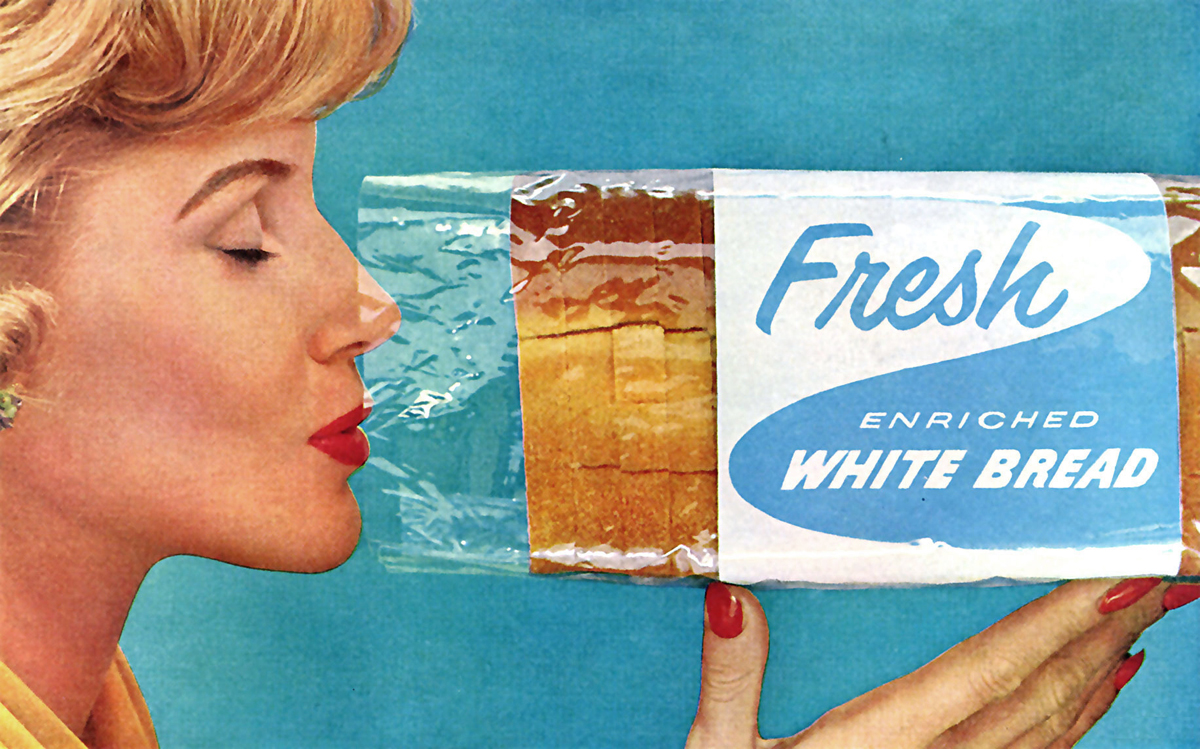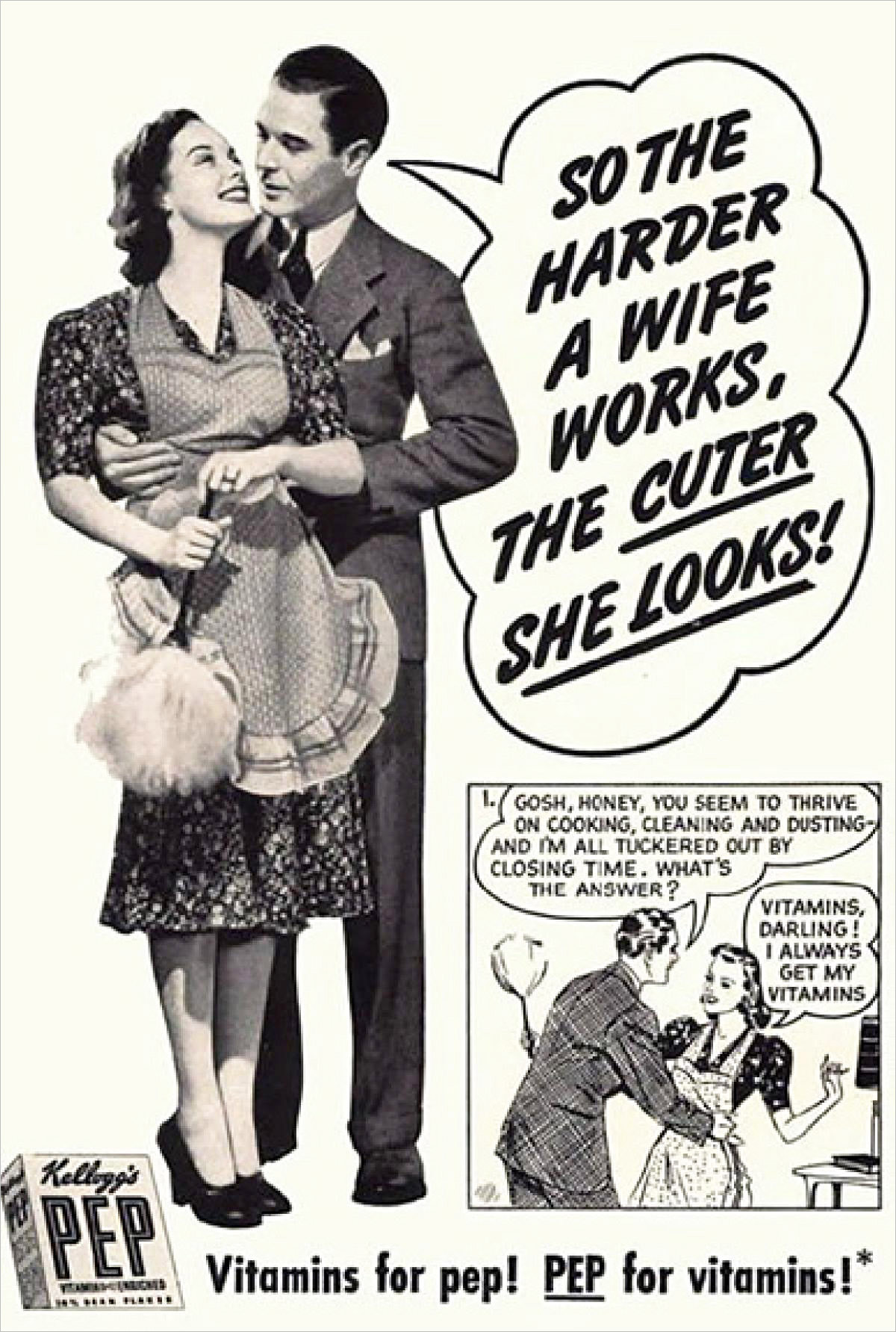How Ad Men Found Freud - Page 2
 |
 |
 |
 |
Few people appreciate ads from the 1940s to 1970s as much as artist Sally Edelstein, who collects them, as well as other ephemera from the period—magazines, old brochures, catalogues, toys, and books.
Edelstein, who lives in a suburb of New York City, creates collages from images in old ads. They're all hand-cut and assembled, though she uses digital copies of the actual ads so as not to destroy the precious originals.
"It's about taking things out of context," she says of her collaged works, "which allows you to make more of a statement."
Her 'Mutually Assured Consumption and Mutually Assured Destruction' collage, for example, with images of refrigerators and missiles, reminds us that the same companies that made life good on the home front—GE, Chrysler, among others—also threatened cataclysm worldwide. "There was the same lust for a greater refrigerator and for a greater missile," Edelstein says.
She appreciates the artistry behind many of the ads of the period.
"The artists were part of the Golden Age of Illustration," Edelstein says. "Norman Rockwell did ads…It was a very lucrative business, and they were the superstars. They were excellent artists."
People enjoy these ads today, she says, in part because of a longing for a simpler time. What could be simpler, for example, than cooling off by bowling?
"There's such a sense of optimism," in ads of the period, she says. "That isn't the way it is now. Now we are so cynical."
"You could release all your desires through all the cornucopia of products that were available. If it were [made of] plastic," she says, "all the better."
Hence, apparently, ads appeared showing babies wrapped in Cellophane—a rather frightening thought these days, to careful parents.
"It's sort of a reflection of the culture of the time," Edelstein says of mid-century ads, "our fairytale notion of what the times were like. Some of those old ideals still linger—the nuclear family, the sense of the ideal family."
Ads from mid-century may have played up the nuclear family, but they also played up sex. Consider 'Sabrina, the World's Finest Projection Equipment.' That ad exemplifies what was called an 'eye stopper,' using a striking sexual image to grab attention but with no depth-filled purpose.
The campaign for Maidenform bras was more scientific, you might say. Some researchers argued against the campaign—where ad after ad showed women, dreaming, that they were exposed to the world half dressed—saying it would provoke nightmares among their intended audience.




